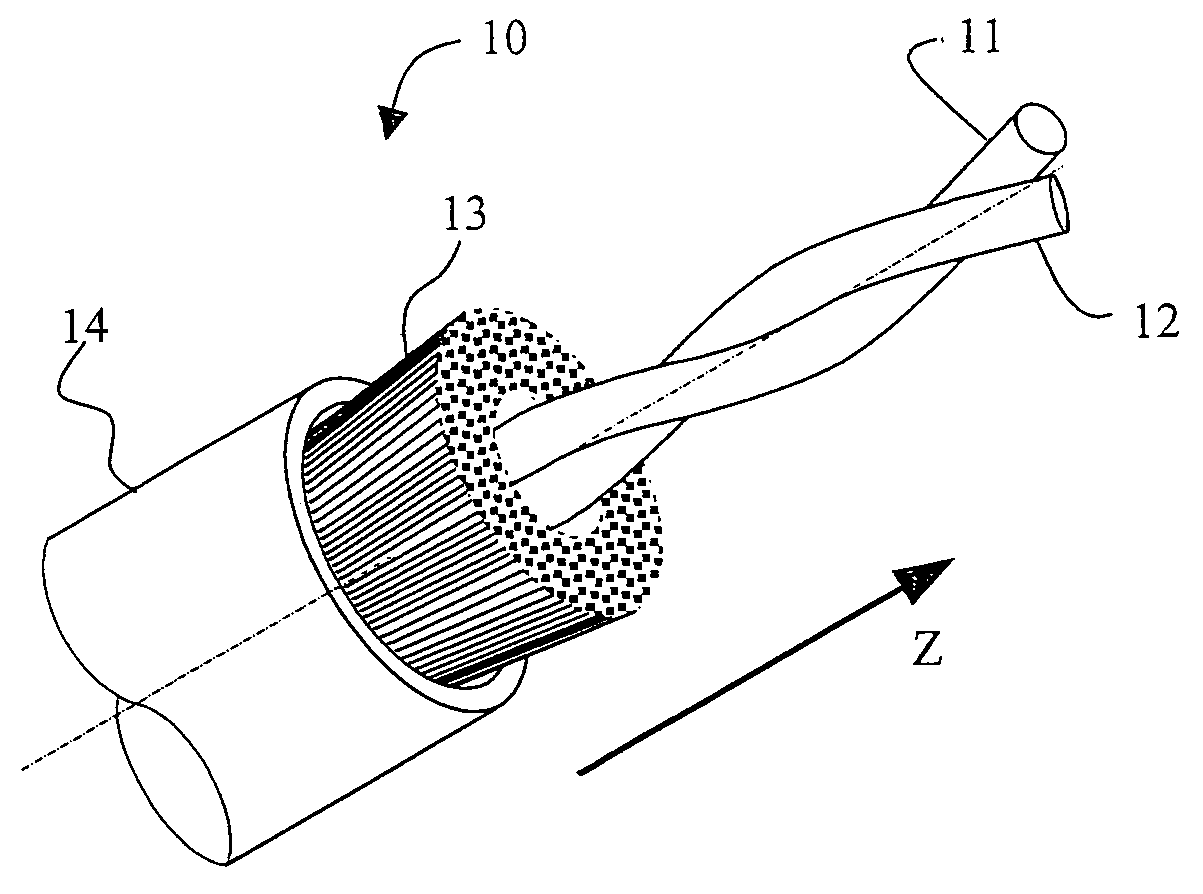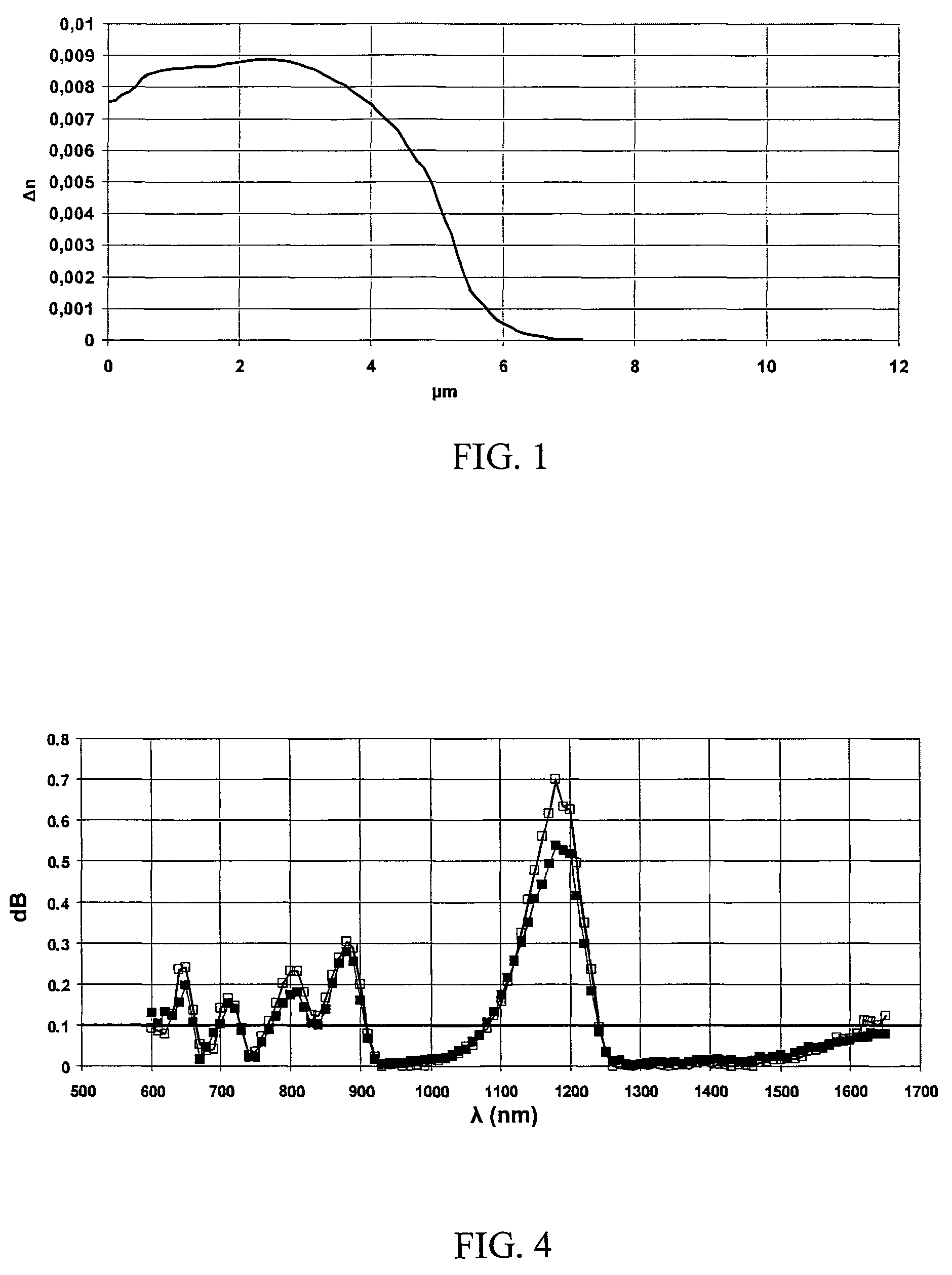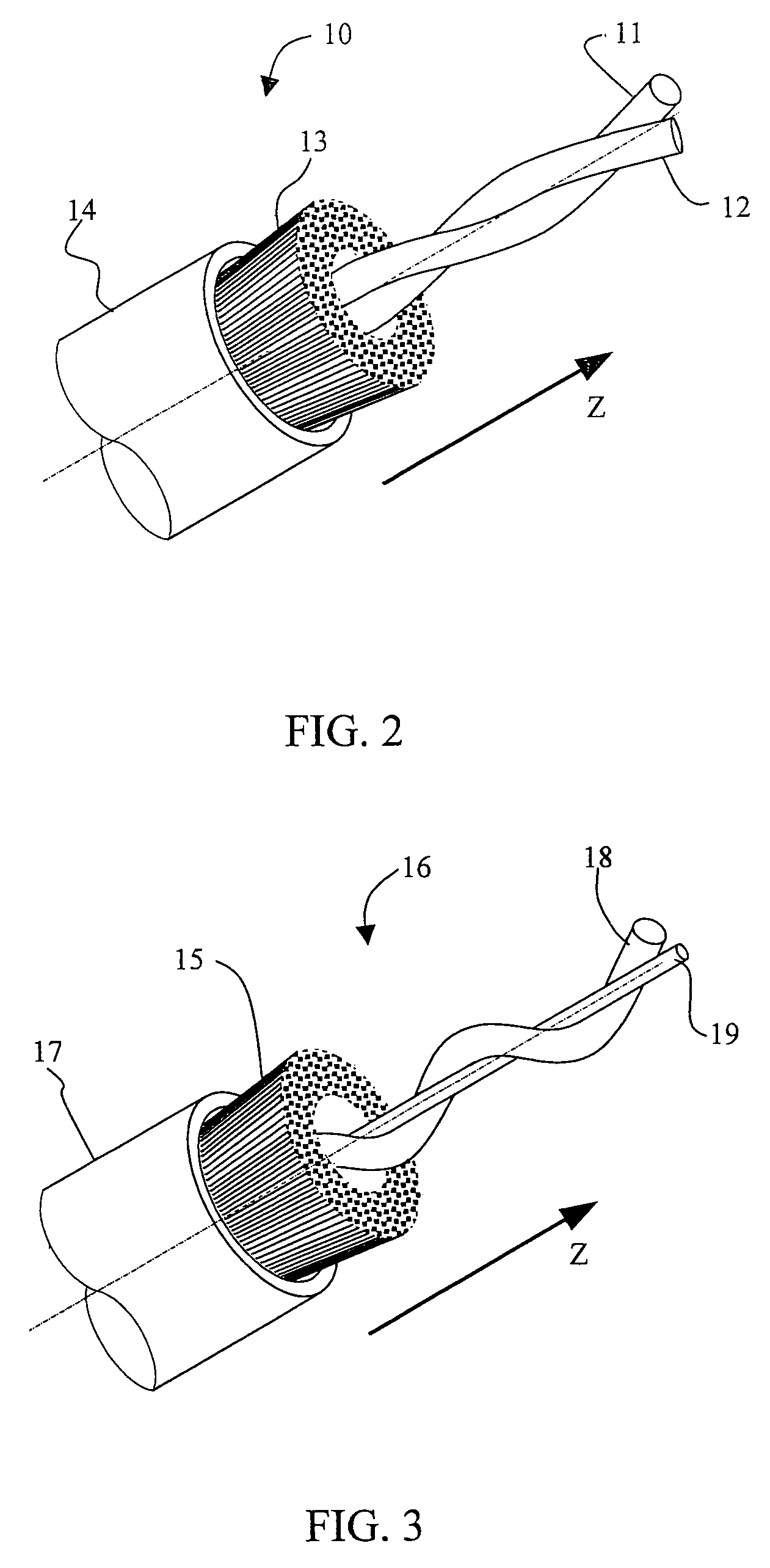Method for checking the correct installation of a bend-insensitive optical cable and optical cable suitable for the method thereof
a technology of bend-insensitive optical cables and optical cables, which is applied in the direction of optical elements, optical apparatus testing, instruments, etc., can solve the problems of not generating measurable optical attenuation within the wavelength, increasing the risk of higher repair and maintenance costs, and achieving cost-effective effects
- Summary
- Abstract
- Description
- Claims
- Application Information
AI Technical Summary
Benefits of technology
Problems solved by technology
Method used
Image
Examples
Embodiment Construction
[0062]Bend-insensitive optical cables comprising single-mode optical fibres are often tailored to FTTP applications, where they are provided in houses, offices, and other premises for telecommunication services, such as broadband Internet, video-on-demand and high-definition IPTV. An access distribution can be deployed on a single floor of a building or generally installed in a multi-story building in order to bring optical fibres to individual subscribers on different floors. For example, in a multi-store building, a distribution network may comprise a MDU placed on the building's basement from which a riser cable traverse the vertical rise of the building and segments of the cable are dropped at each floor. Alternatively, the distribution cable can be routed from an optical network unit and is spliced up at a plenum cable entrance facility in a plurality of drop cables that then reach different houses of individual subscribers.
[0063]Installation routes of drop cables often include...
PUM
| Property | Measurement | Unit |
|---|---|---|
| cut-off wavelength | aaaaa | aaaaa |
| test wavelength | aaaaa | aaaaa |
| test wavelength | aaaaa | aaaaa |
Abstract
Description
Claims
Application Information
 Login to View More
Login to View More - R&D
- Intellectual Property
- Life Sciences
- Materials
- Tech Scout
- Unparalleled Data Quality
- Higher Quality Content
- 60% Fewer Hallucinations
Browse by: Latest US Patents, China's latest patents, Technical Efficacy Thesaurus, Application Domain, Technology Topic, Popular Technical Reports.
© 2025 PatSnap. All rights reserved.Legal|Privacy policy|Modern Slavery Act Transparency Statement|Sitemap|About US| Contact US: help@patsnap.com



